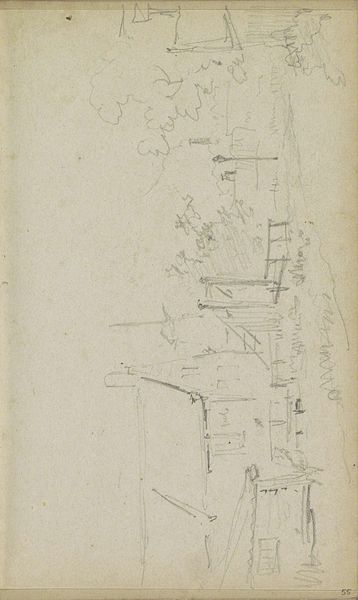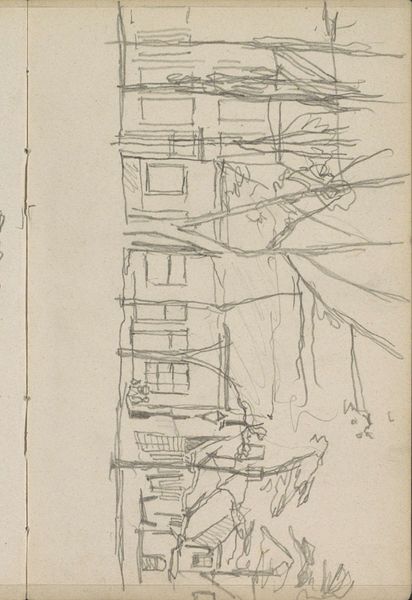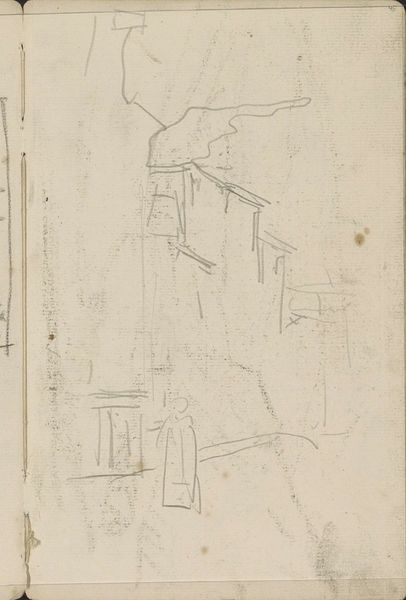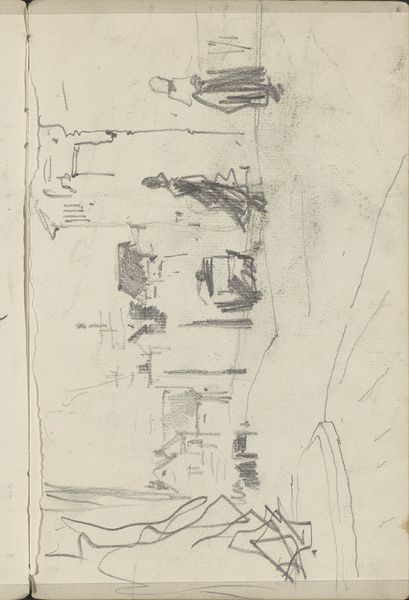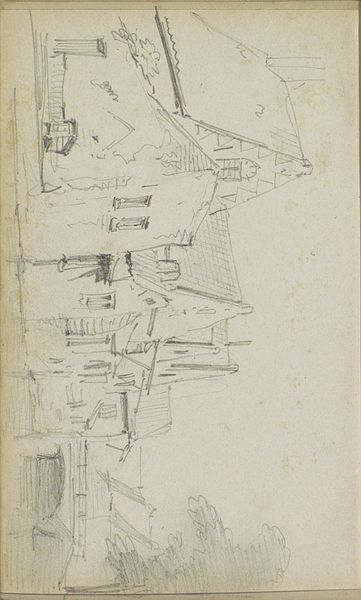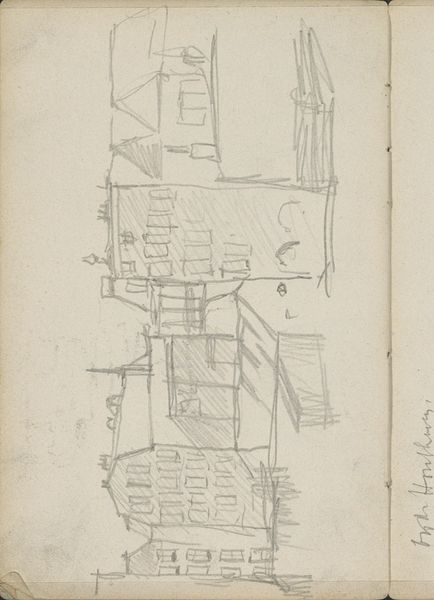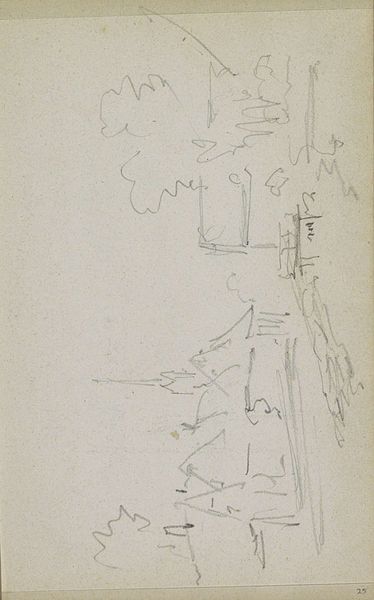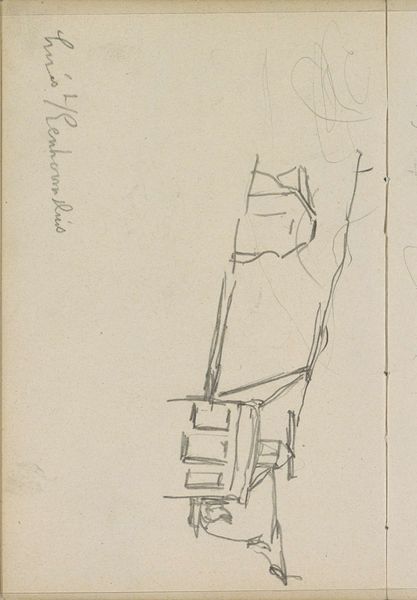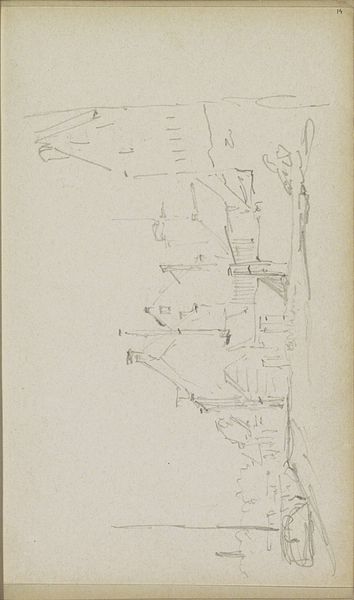
drawing, pencil
#
drawing
#
impressionism
#
pencil
#
cityscape
#
genre-painting
#
street
#
realism
Dimensions: height 98 mm, width 161 mm
Copyright: Rijks Museum: Open Domain
Curator: Here we have a pencil drawing, "Straatgezichten," or "Street Views," by Adrianus Eversen, created sometime between 1828 and 1897. Editor: My first impression is quiet observation, like peering through a dusty window onto everyday life. It's not grand or dramatic, just…there. Curator: Indeed, the mundane is what Eversen captures. Look at the materiality here, the soft graphite smudging across the page. How does that process emphasize the immediacy of the fleeting moment? The quick, light lines seem to denote temporality and a possible intention for it to be the foundation of a larger work. Editor: The use of a humble material like pencil points towards accessibility. Was Eversen aiming to capture street life in a way that bypassed the elitism often associated with 'high art'? Maybe it functioned as a means of connecting to a broader public through depictions of their lived experiences. The means of reproduction are immediate and relatively simple, implying widespread production as part of a bigger social shift towards artistic democratization. Curator: Absolutely. Consider the recurring motif of steps and ledges across these three street scenes. Stairs are transitional symbols in art history – portals between states of being. What transition might Eversen be suggesting through his visual vocabulary? A society on the cusp of modernization? Perhaps the three different iterations also represent distinct psychological perspectives: The first a grand vision, the second a quiet, passing-by observation, the last a public gathering-like observation. Editor: Or, to be more pragmatic, those stairs…are just the way things are, buildings, plazas...structures defining how people moved and interacted with the urban landscape at the time. The pencil strokes record the specific arrangement of materials—stone, brick, wood—that would dictate class boundaries. I agree about their meaning but differ as to their cause. How the city is experienced hinges on the materials that construct it and by whom, implying an architect, the city, and more inhabitants of the space. Curator: A valid interpretation. So, considering the symbolism and the tangible aspects of the city in “Straatgezichten,” we see how Eversen has managed to transform a series of quick sketches into a statement about society. Editor: It really illustrates how something so simple in material and apparent execution can tell such rich stories, deeply rooted in the experience of inhabiting a specific time and place.
Comments
No comments
Be the first to comment and join the conversation on the ultimate creative platform.

